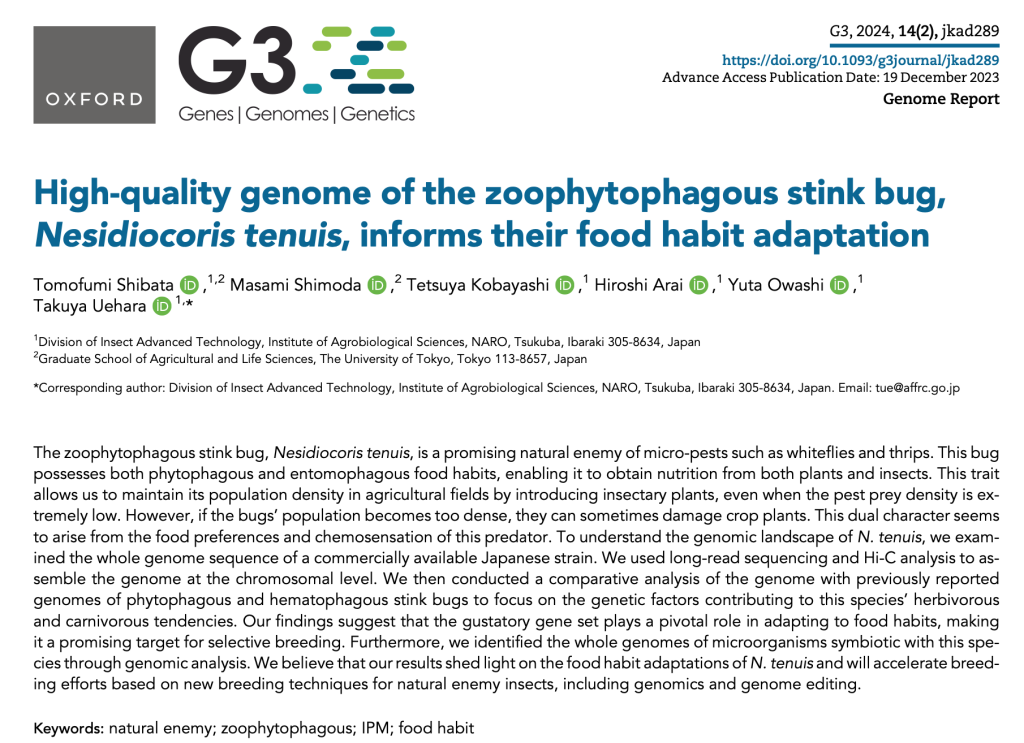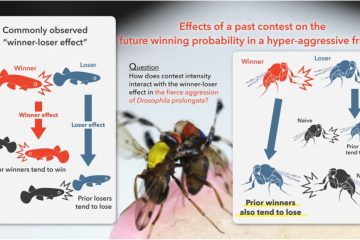The paper by Tomofumi Shibata, 2nd year master’s student, are now available.
You can check it from the following link.
G3 URL : https://academic.oup.com/g3journal/article/14/2/jkad289/7479702

【Tittle】
High-quality genome of the zoophytophagous stink bug, Nesidiocoris tenuis, informs their food habit adaptation
【Short summary】
N. tenuis is a promising natural enemy of micropests such as thrips. This species exhibits both zoophytophagous and herbivorous behaviors, raising concerns about crop damage as its population density increases. Genetic insights addressing like this issue insufficient.In this study, we used Oxford Nanopore Technology for long-read sequencing combined with Hi-C technology to address two key objectives. Firstly, we conducted a whole genome analysis (1) and secondly, we investigated the species’ food habit adaptation (2).
1) We successfully assembled a high-quality 🧬 with 20 scaffolds, an N50 value of 16.4 Mb, and a BUSCO score of 94.6%. This assembly surpasses the previously reported genome for this species in terms of quality and can be considered at the chromosome level.
Additionally, we obtained complete 🧬 of symbiotic microorganisms as byproducts, confirming that N. tenuis hosts Spiroplasma and Rickettsia as endosymbionts through genome homology. We extend our gratitude to Dr. Owashi and Dr. Arai for their contributions to the analysis.
2) We conducted a comparative analysis of 🪴, 🪴&🍖, and 🩸 related species. Our research into chemoreceptors revealed a frequent observation of clades within the OR family, in the Miridae. This suggests that Miridae species share a set of common odorants.
Phytophagous species exhibited the form of relatively large clades within GR, indicating a tendency to perceive similar plant volatile compounds. However, each species showed a preference for more specific GR corresponding to their food habit adaptation.
In light of the growing prominence of genome editing technologies, we are confident that the high-quality, continuous 🧬 elucidated in this study will significantly contribute to the understanding of N. tenuis’ biological functions and the exploration of beneficial traits!!
2023/09



0件のコメント